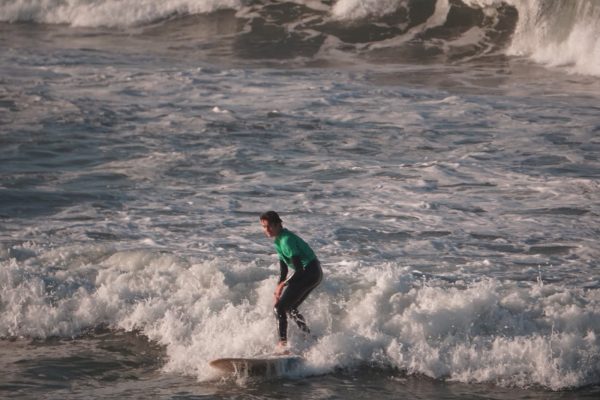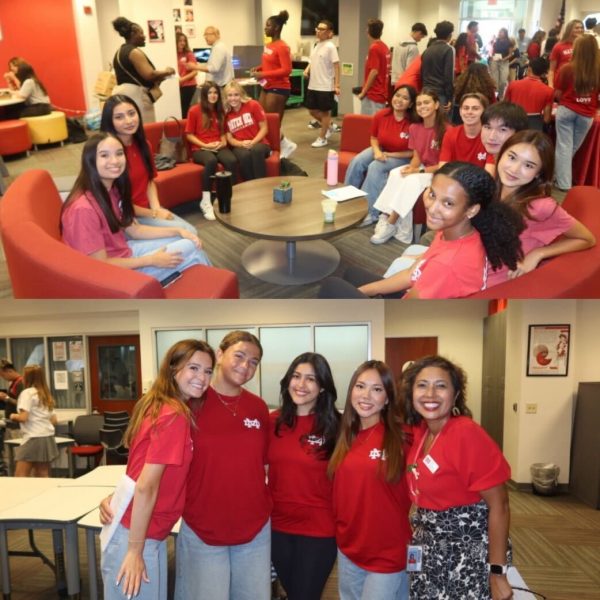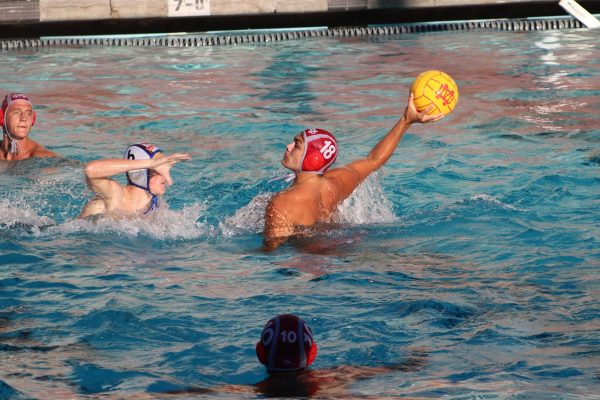The ’00s fashion of Hulu’s ‘Looking For Alaska’ explained by its designer, Matthew Simonelli
This article was first published in the LA Times High School Insider.
John Green’s first novel, the award-winning “Looking For Alaska,” is finally heading to to mobile screens everywhere, 14 years after it was first optioned. The eight-episode Hulu mini series show is breaking the mold in its rugged and unfiltered portrayal of the drama that is teenage adolescence through prank wars, epic love, social barriers and the journey of seeking your “Great Perhaps.”
Because the novel was published in 2005, the show’s costumes are one of the most powerful ways the world of the aughts is recreated. The wardrobe is a pure 2000s revival that feels completely relevant to today’s own trends.
For example, the antagonists of the story, known as the “Weekday Warriors,” stride to class in spaghetti straps, puka shell necklaces, and the quintessential short-strapped baguette-style handbags.
The clothes are an integral piece of character development especially for the (deeply emotional) heroine, Alaska Young.
To understand how the “Looking For Alaska” aesthetic came to be, costume designer (and “Gossip Girl” alum) Matthew Simonelli shared all things inspiration with me, from the creation of Takumi’s drop-crotch pants look, the art of “dressing for you,” and the second-hand stores that make up the majority of Alaska’s closet.
This interview has been lightly edited for clarity and length.
How did you get involved with the project?
I worked with Josh Schwartz and Stephanie Savage (creators of “Gossip Girl,” “Runaways,” and “The OC”) on “Gossip Girl” back around 2008. I think a couple of people had seen my work on “Search Party” and my name was thrown into the mix for Alaska. I had a super collaborative and fun interview with Sarah Adina Smith (director of the pilot), and we clicked right away. Before interviewing with the director and then later the creators, you sort of have to put together a creative pitch. I had pulled together some inspiration images and created some extensive mood boards. Sarah really responded to it, and from there it was a go.
How did you start to get a good sense for who the characters are? Did you read the book beforehand or the scripts?
I listened to the audiobook twice while creating the presentation and then I read the book while I was waiting to find out if I landed the job. I realized after reading the first script that I really wanted to do the opposite of Josh and Stephanie’s other work, like, “The OC” and “Gossip Girl.” I wanted to hit the other end of the spectrum, where it wasn’t a polished, sophisticated sparkly world. I think the end result feels very naturalistic and real.
How did the shopping process start?
Initially I had a couple of weeks where I shopped in New York, and focused on my principal characters like Alaska, Miles, and the Colonel. I hit places like Amarcord Vintage where I found Alaska’s La Salle varsity jacket, thanksgiving dress, and the red Tahiti shirt. I spent time shopping at Brandy Melville too, which had some excellent pieces, but the bulk of it was thrifted. When landed in Louisiana and production had started, it was like a freight train without breaks, there was no stopping it. We needed so me much more clothing very quickly. I had a great team of local crew, shoppers, costumers, supervisors that worked so hard and were familiar with the area, the shops, local talent. The shopping there was definitely limited, but I want to say that added to the awkwardness of our still unformed teen characters. When we would find ourselves at a loss with our local resources, we turned to eBay. That’s where we found the Colonel’s period Nike’s.
I think when a lot of people read the book they imagine Alaska as the brooding, all black, leather jacket wearing type, but in the Hulu adaptation it’s really not like that. Her looks can be very colorful with a lot of ’70s vibes, how did you go about making that decision?
I would imagine scenarios like “oh maybe she happened to watch the movie ‘Almost Famous,’ and maybe something kind of tapped into her and she said to herself, ‘I can do that, that’s a style that’s accessible to me.’” She goes through these wild mood swings, and I really wanted the clothing to move along with her and give her [emotional] state some context. Alaska bounces between these dark and isolating moments, to times of great joy where she is a bit more colorful. I really like it when Alaska feels playful with a little bit of a romance.
You did a really good job taking us back to 2005. What did you draw from for inspiration for this retro world?
It depended on the episode I was working on and the feel of each script. For the Debutante Ball (in Episode 2) I kept going back to this movie called “Picnic at Hanging Rock.”It’s a beautiful film from the ’70s and it has all these sort of Victorian crocheted dresses that looked like something Alaska might dream about. I also looked at images from old V magazines and old Seventeen’s and Teen Vogues. It was really fun looking at shows like “Lizzie McGuire,” “The Devil wears Prada,” and “13 going on 30” and then there are sorta timeless movies like “Jawbreaker” that are always a touchstone for me. I thought a lot about the time period and in contrast, the time period I wanted our world to live in. These are regular kids in the middle of Alabama, I didn’t want the clothing to get in the way of the story or source material. So by putting Alaska in this kind of ’70s style, I was able to isolate her and create a sense of otherness, different from the 2005-ness of the rest of the school. At the end of the day, I think the show should feel timeless because the story is timeless. This story is recurring, has happened in the past and keeps happening. I wanted to create a world that teens could still enjoy 15 to 20 years from now and have the style choices not interfere.
Going back to the book for a sec, after reading, was there a character that particularly excited you?
Dr. Hyde. He is a great character that has a lot of depth, compassion and complexity. He was really well written. I think Josh and Stephanie put a lot of heart into developing that character, and it really showed. I wanted to take him further than they imaged and really breathe life into him. When you first read the book, you sorta picture a guy in a three piece tweed suit. I wanted to take a spin on that and kinda mix it up a bit. So I started developing ideas based on some new insights the script reveals. Dr. Hyde basically comes out to Alaska and Miles in the Thanksgiving episode. I felt a connection to the character and it was really important to me to get him right. Larry Kramer came immediately to mind. He is this amazing LGBT activist, play right, author and professor. He always wears overalls, and I decided to steal that. My other reference for Hyde was playwright and poet Amiri Baraka, which Ron Chephas really connected to. Part of the true joy of dressing Dr. Hyde, was working with Ron Cephas Jones, a true collaborator.
With Alaska was there one look that sticks out to you that had a lot of intention behind it?
I really loved this scene in the pilot, when Miles visits Alaska’s dorm. It’s just after he’s been tossed in the lake, and he goes to her for some support and compassion but she just rebuffs him. In that scene, she’s wearing this, black t-shirt that I purchased from Beacon’s Closet with some glittery kittens on it. It was a nice choice because it was this black t-shirt made to look gray and washed out which is where her mood was, but then you have these sweet little he kittens, which are so cute and playful.
Her mood makes no sense to Miles but there’s still this playfulness of the shirt. So I think when he comes to her, there’s this conflict of information happening. There’s both vulnerability and confrontation in it. I think for me, that’s actually a crucial look into Alaska.
The show featured some seriously epic pieces. For example, that backpack. How do you go about finding a backpack like that?
That we bought locally in Louisiana and then it was beat up. There’s a red and lavender sweatshirt that Alaska ties around her waist in a scene which was a Free People shirt that I really liked. So I had my ager, age it down and make it feel really old. There’s a whole artisan pocket of ager dyers in our costume world… they are the best asset a production can have. Their jobs are to dye fabric and age things up, and give everything a little history. But that’s just the tip of the iceberg for that profession.
What were some of your favorite looks from the show? Things you wish you could have taken home?
It’s funny, I’ve been thinking about this, and at the end of the day when your designing all these characters they become some sort of mini avatar of yourself. With that said, I need all of Takumi for sure and all of Dr. Hyde. And, you know, if I had a slightly longer torso, I’d be rocking Alaska’s Bell bottoms all day everyday.
Considering she is such a strong feminist character, she does have a boyfriend. We never see her wearing his sweatshirts or anything like that. Was that intentional?
It was intentional. I do think she thinks about him and cares about him deeply, but we are living in her world of Culver Creek which I think part of her is protective over. She is someone that has lost a lot of people in her life. So many people have let her down, so I think it takes a lot to penetrate that wall of self protection. With that said, I think the jacket is a sweet remembrance and nostalgia for her mom, someone she feels she let down, and not the other way around.
So like a detachment mechanism. What would you tell someone watching the show who wants to follow the aesthetic of “Looking For Alaska”?
I think the art of dressing comes from finding the things that make you feel strong. Every day when Alaska is getting dressed, it’s a form of battle gear. Whether she’s feeling romantic or not, she’s dressing to interact with people on her own terms. Number one, you’ve got to feel good and empowered. I think that the minute you start dressing for someone else is the minute insecurity starts popping up. When I dress actors, I want them to feel strong and like they can really step into the character. The second it doesn’t feel right it’s over, time to move onto the next piece. I’m a big fan of experimenting a bit. Play around and see what shapes work. When you make a bold decision, you’re presenting yourself and you’re you’re doing it unapologetically, I really respect that.
Your donation will support the Student Publications Department at Mater Dei High School. Your contribution will allow us to keep our equipment up to date and cover our annual website hosting costs.








![PUTTING IN OVERTIME: Student wrestlers participate in scrimmage matches during practice. The Mater Dei Wrestling Team puts a lot of time and effort into training for matches. “I practice every day,” Gomez said. “We train for three hours and then [a] two hour lift.”](https://thescarletscroll.com/wp-content/uploads/2025/09/wrestling.jpg)
Isabella Botero • Jan 28, 2020 at 10:07 pm
I think this article is interesting because it makes me think about the deeper meaning of fashion. The clothes and accessories you decide to wear, whether they be from this decade or another, are part of our identity, even if we don’t realize it at first. They can emanate your culture, race, financial state, and personality.